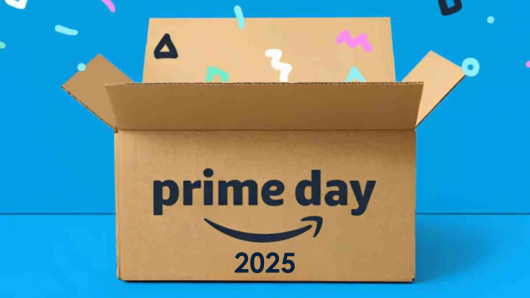Amazon’s annual shopping event returned this July with a major twist: Prime Day 2025 spanned four days – July 8th to 11th – doubling its usual two-day format. In light of inflation, new tariffs, and shifting consumer priorities, the event delivered record-breaking results, but not without nuance. From cautious spending to a first-party seller surge, here’s a breakdown of what made this year’s Prime Day unlike any before.
Double the Days, Double the Impact?
This year, Amazon extended Prime Day to four days, a significantly longer event than the traditional two-day event. The goal? Provide shoppers with more time to browse deals and minimize the risk of a crowded summer promotions space from Walmart, Target, Best Buy, and other retailers. According to Numerator, 63% of shoppers appreciated the longer shopping window, saying that it gave them more time to find deals.
This is especially true as the event came on the heels of the Fourth of July holiday weekend in the US, where many shoppers were coming back from vacation or other travel plans. This may have also been a strategic move on Amazon’s part to lessen the strain this event typically places on its supply chains; more days mean smoother site traffic and order volume.
Record-Breaking Sales, but with Caution
Day one of Prime Day, across all online sales, reached $7.9 billion, up nearly 10% year-over-year, and was declared “the single biggest e-commerce day so far this year,” from a study done by Adobe. According to the same study, shoppers spent $24.1 billion online over the four days across all retailers. That’s nearly $2.5 billion more than 2024’s two-day event.
MarketWatch saw that early shopping data for Prime Day didn’t resonate with shoppers the way it had in the past. Sellers saw a 41% decline in sales on the first day of the Prime Day event this year than they did on the first day in 2024. This can be attributed to a longer event in 2025; shoppers had less pressure to take advantage of the deals early on this year than they had in years past.
The other observation made this year is that other e-commerce retailers copied Amazon’s sale event more than ever before. In the past, Walmart had been the top copycat retailer in the space, but this year, we saw almost all major retail sites running some sort of sale event to counter Amazon. This leads to more research behavior on the consumer. Consumers browsed Amazon, Walmart, Target, Costco, and even the brand-owned sites to see where they could find the best deals.
What Shoppers Bought, and What They Didn’t
According to Numerator, shoppers were cautious and calculated:
- 67% of purchased items were priced under $20
- Only 3% of items were over $100
- Top-selling categories: Household essentials (30%), Apparel (30%), Home goods (27%), Health & wellness (26%), Beauty & cosmetics (25%)
- Best-selling items: Premier Protein shakes, Dawn Powerwash spray, Liquid I.V. hydration packets
Adobe also noted back-to-school sales momentum:
- Backpacks: up 225%
- Kids’ apparel: up 200%
- School supplies: up 180%
Still, many avoided splurging on big-ticket tech unless steep discounts applied. Despite the impressive total, sales were more stretched out and value-focused, with essentials dominating carts.
Amazon vs. Third-Party Sellers: First-Party Surges
One of the clearest shifts this year was the rise of Amazon’s own inventory (1P) over third-party marketplace sellers (3P):
Amazon 1P Advantages
- Control over pricing allowed Amazon to offer deeper discounts on household goods, electronics, and apparel
- Greater visibility and promotion on search results and deals pages
- Analysts estimate Amazon’s 1P accounted for ~55–60% of total GMV — up from ~50% in prior years
3P Seller Challenges
- Trump-era tariffs on aluminum-heavy and Chinese goods drove up costs
- 60% of 3P sellers reduced discounts or skipped participation
- Many couldn’t meet the 20% minimum discount required for Prime Day visibility
Essentially, Amazon’s direct control gave it a clear edge in categories where third-party sellers faced margin constraints.
The Economic Backdrop: Frugality Rules
Consumers in 2025 remain budget-conscious, influenced by:
- Slow GDP growth (~0.6%) and persistently low consumer confidence
- Online prices dropping for 33 straight months
- Pressure from new tariffs inflating costs on popular imports
Per Numerator, 31% of surveyed consumers said they were more cautious with spending due to the economy, and 37% said tariffs impacted their purchase decisions.
Still, nearly 67% of shoppers were satisfied or very satisfied with their deals, suggesting Amazon’s pricing strategy hit the mark, even amid restraint.
Smart Shopping Behavior: AI, Comparisons & Mobile-First
Adobe found that:
- Mobile accounted for 52.6% of orders
- AI-powered tools, personalized notifications, and real-time price alerts shaped decisions
- Shoppers actively compared prices – 57% looked at Walmart or Target before buying
This reflects a broader trend: deal-savvy, digitally empowered consumers driving demand, not just impulse purchases.
A New Kind of Prime
Prime Day 2025 set new records not just in dollars but in how consumers shop. In a year of frugality, tariffs, and AI-enhanced decision-making, shoppers proved they’re willing to spend – but only smartly.
Amazon’s decision to double the length of the event may have signaled a permanent evolution in retail timing. But this year also made one thing clear: the Prime Day of the future is longer, leaner, and more strategically shopped than ever before.








